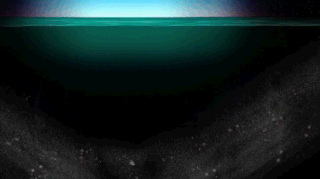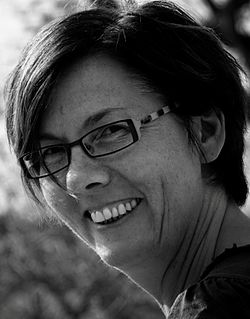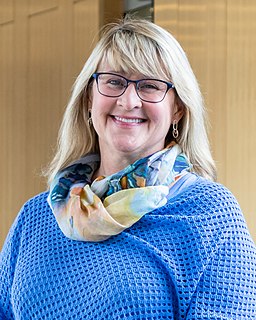Related Research Articles

Marine biology is the scientific study of the biology of marine life, organisms in the sea. Given that in biology many phyla, families and genera have some species that live in the sea and others that live on land, marine biology classifies species based on the environment rather than on taxonomy.

Zooplankton are the animal component of the planktonic community. Plankton are aquatic organisms that are unable to swim effectively against currents, and consequently drift or are carried along by currents in the ocean, or by currents in seas, lakes or rivers.

The biological pump, also known as the marine carbon pump, is, in its simplest form, the ocean's biologically driven sequestration of carbon from the atmosphere and land runoff to the ocean interior and seafloor sediments. It is the part of the oceanic carbon cycle responsible for the cycling of organic matter formed mainly by phytoplankton during photosynthesis (soft-tissue pump), as well as the cycling of calcium carbonate (CaCO3) formed into shells by certain organisms such as plankton and mollusks (carbonate pump).

The Sargasso Sea is a region of the Atlantic Ocean bounded by four currents forming an ocean gyre. Unlike all other regions called seas, it has no land boundaries. It is distinguished from other parts of the Atlantic Ocean by its characteristic brown Sargassum seaweed and often calm blue water.

Sargassum is a genus of brown macroalgae (seaweed) in the order Fucales. Numerous species are distributed throughout the temperate and tropical oceans of the world, where they generally inhabit shallow water and coral reefs, and the genus is widely known for its planktonic (free-floating) species. Most species within the class Phaeophyceae are predominantly cold-water organisms that benefit from nutrients upwelling, but the genus Sargassum appears to be an exception. Any number of the normally benthic species may take on a planktonic, often pelagic existence after being removed from reefs during rough weather; however, two species have become holopelagic—reproducing vegetatively and never attaching to the seafloor during their lifecycles. The Atlantic Ocean's Sargasso Sea was named after the algae, as it hosts a large amount of Sargassum.

Diel vertical migration (DVM), also known as diurnal vertical migration, is a pattern of movement used by some organisms, such as copepods, living in the ocean and in lakes. The word diel comes from the Latin dies day, and means a 24-hour period. The migration occurs when organisms move up to the uppermost layer of the sea at night and return to the bottom of the daylight zone of the oceans or to the dense, bottom layer of lakes during the day. It is important to the functioning of deep-sea food webs and the biologically driven sequestration of carbon.
María de los Ángeles Alvariño González, known as Ángeles Alvariño, was a Spanish fishery research biologist and oceanographer globally recognized as an authority in plankton biology. She was the first woman ever appointed as scientist aboard any British or Spanish exploration ship. She discovered 22 new species of marine animals and published over a hundred scientific books, essays, and articles. In her late career she studied the history of early marine scientific exploration.

Gelatinous zooplankton are fragile animals that live in the water column in the ocean. Their delicate bodies have no hard parts and are easily damaged or destroyed. Gelatinous zooplankton are often transparent. All jellyfish are gelatinous zooplankton, but not all gelatinous zooplankton are jellyfish. The most commonly encountered organisms include ctenophores, medusae, salps, and Chaetognatha in coastal waters. However, almost all marine phyla, including Annelida, Mollusca and Arthropoda, contain gelatinous species, but many of those odd species live in the open ocean and the deep sea and are less available to the casual ocean observer. Many gelatinous plankters utilize mucous structures in order to filter feed. Gelatinous zooplankton have also been called "Gelata".

The Virginia Institute of Marine Science (VIMS) is one of the largest marine research and education centers in the United States. Founded in 1940, VIMS is unique among marine science institutions in its legal mandate to provide research, education, and advisory service to government, citizens, and industry. Funding for VIMS comes from the Commonwealth of Virginia, grants and contracts from federal and state agencies, and private giving. The School of Marine Science (SMS) at VIMS is the graduate school in marine science for the College of William & Mary. VIMS offers M.S., Ph.D., and professional M.A. degrees marine science. The school has 52 faculty members, an enrollment of 80-100 students, and includes 4 academic departments. VIMS' main campus is located in Gloucester Point, Virginia.

The Institute for Marine and Antarctic Studies (IMAS) is a teaching and research institute of the University of Tasmania in Hobart, Tasmania. IMAS was established in 2010, building upon the university's partnership with CSIRO Oceans and Atmosphere and the Australian Antarctic Division in cooperative Antarctic research and Southern Ocean research.
The Centre for Marine Living Resources & Ecology (CMLRE) is a research institute in Kochi, Kerala under the Ministry of Earth Sciences, Government of India with a mandate to study the marine living resources. Today, apart from implementing various research projects of the ministry, the institute also manages and operates the Fishery Oceanographic Research Vessel (FORV) Sagar Sampada.
Alice Alldredge is an American oceanographer and marine biologist who studies marine snow, carbon cycling, microbes and plankton in the ecology of the ocean. She has conducted research in the open sea, at her laboratory at the University of California, Santa Barbara as well as in collaboration with the Long Term Ecological Research Network (LTER) at the Mo'orea Coral Reef Long Term Ecological Research Site in Mo'orea, French Polynesia. According to the annual ISI Web of Knowledge list published by Thomson Reuters, she has been one of the most cited scientific researchers since 2003.

Bettina Meyer is a German Antarctic researcher, best known for her work on the ecology and physiology of invertebrates in the pelagic zone. She is the head of the ecophysiology of pelagic key species working group at the Alfred Wegener Institute for Polar and Marine Research (AWI).
Polly A. Penhale is an American biologist and Environmental Officer at the National Science Foundation. She is a leading figure in Antarctic research, and has been recognized for contributions to research, policy, and environmental conservation. Penhale Peak in Antarctica is named for her.

The lipid pump sequesters carbon from the ocean's surface to deeper waters via lipids associated with overwintering vertically migratory zooplankton. Lipids are a class of hydrocarbon rich, nitrogen and phosphorus deficient compounds essential for cellular structures. This lipid carbon enters the deep ocean as carbon dioxide produced by respiration of lipid reserves and as organic matter from the mortality of zooplankton.

Janet Mary Grieve, also known as Janet Bradford-Grieve and Janet Bradford, is a New Zealand biological oceanographer, born in 1940. She is researcher emerita at the National Institute of Water and Atmospheric Research in Wellington. She has researched extensively on marine taxonomy and biological productivity. She was president of both the New Zealand Association of Scientists (1998–2000) and the World Association of Copepodologists (2008–11).

Deborah Ann Bronk is an American oceanographer and the president and CEO of Bigelow Laboratory for Ocean Sciences. She leads the nonprofit research institution in East Boothbay, Maine in its mission to understand the ocean's microbial engine and to harness the potential of these and other organisms at the base of the ocean food web through research, education, and innovation.
Sarah Fawcett is a South African oceanographer and climatologist. A senior lecturer in the Department of Oceanography at the University of Cape Town, she is particularly interested in the role of oceans in regulating biogeochemical cycles and how their dysregulation contributes to climate change. She was honoured in the World Economic Forum Young Scientists Class of 2020, and a P-Rating from the National Research Foundation, which recognizes that the scientist's work will likely have high impact.

Sivasankaran Bijoy Nandan is a Professor at the Department of Marine Biology, Microbiology & Biochemistry, School of Marine Sciences, Cochin University of Science & Technology (CUSAT). He currently holds the office of the Dean, Faculty of Marine Sciences, Cochin University of Science and Technology. He was served as Head of the department, Department of Marine Biology, Microbiology and Biochemistry, CUSAT during 2019-2021 period. He has expertise in teaching, research, and development activities in the broad area of Aquatic Ecosystem Characterisation, Conservation, Restoration and Management, Carbon Dynamics & Community Ecology, Communities Ecology & Biology, Eco-toxicology and Biology of Polar Communities. Recently a new species of deep sea wood boring mollusc collected from eastern Arabian Sea named after Prof. Bijoy Nandan as Xylophaga nandani by team of Researchers from Brazil and India namely, Marcel Velásquez, P.R. Jayachandran & M. Jima.
Kendra Lee Daly is an oceanographer known for her work on zooplankton, particularly in low oxygen regions of the ocean. She is a professor at the University of South Florida, and an elected fellow of the American Association for the Advancement of Science.
References
- 1 2 Dietrich, Tamara. "VIMS Antarctic research part of new documentary". dailypress.com. Retrieved 2016-05-22.
- 1 2 Malmquist, Dave (21 July 2005). "VIMS Researchers Re-Enter Ocean "Twilight Zone"". Virginia Institute of Marine Science. Retrieved 19 May 2016.
- ↑ "Deborah Steinberg". State Council of Higher Education for Virginia. Virginia.gov. Archived from the original on 8 April 2016. Retrieved 19 May 2016.
- 1 2 "5th International Zooplankton Symposium". www.pices.int. Retrieved 2016-05-22.
- ↑ "Deborah Steinberg CSX Professor; Dept. Chair, Biological Sciences". Virginia Institute of Marine Science . Retrieved April 28, 2022.
- 1 2 Kelly, Daniel (2013-01-18). "Debbie Steingberg Explains Zooplankton Research". Environmental Monitor. Retrieved 2016-05-23.
- ↑ "Deborah K. Steinberg". Virginia Institute of Marine Science. Retrieved 19 May 2016.
- ↑ Rejcek, Peter (June 18, 2010). "Back in Time". AntarcticSun.USAP.gov. The Antarctic Sun. Retrieved May 22, 2016.
- ↑ "In Review: Antarctic Edge: 70° South". www.earthisland.org. Retrieved 2016-05-22.
- ↑ Malmquist, David (9 October 2012). "Study Shows Small Fish Can Play a Big Role in the Coastal Carbon Cycle". Virginia Institute of Marine Science. Retrieved 19 May 2016.
- ↑ "Palmer Long Term Ecological Research". Virginia Institute of Marine Science. Retrieved 19 May 2016.
- ↑ "BATS Zooplankton Census". Virginia Institute of Marine Science. Retrieved 19 May 2016.
- ↑ Malmquist, David (14 May 2010). "ANACONDAS Project Brings VIMS to the Amazon Plume". Virginia Institute of Marine Science. Retrieved 19 May 2016.
- ↑ Moran, Susan (12 March 2012). "Team Tracks a Food Supply at the End of the World". The New York Times. Retrieved 19 May 2016.
- ↑ Antarctic Edge: 70° South, June 1, 2015, retrieved May 22, 2016
- ↑ "Antarctic Edge: 70 Degrees South". Rutgers.edu. Retrieved May 22, 2016.
- ↑ "Palmer Station Antarctica LTER". Palmer LTER. Retrieved 19 May 2016.
- ↑ "Overview of BATS". Bermuda Atlantic Time-Series Study. Bermuda Institute of Ocean Science. Retrieved 19 May 2016.
- ↑ "Steinberg receives Virginia Outstanding Faculty Award". www.vims.edu. Retrieved 2016-05-22.
- ↑ Langhorne, Nicholas (3 April 2014). "W&M Announces 2014 Recipients of Plumeri Awards for Faculty Excellence". William & Mary. Retrieved 19 May 2016.
- ↑ "The Raft Debate". www.wm.edu. Retrieved 2016-05-20.